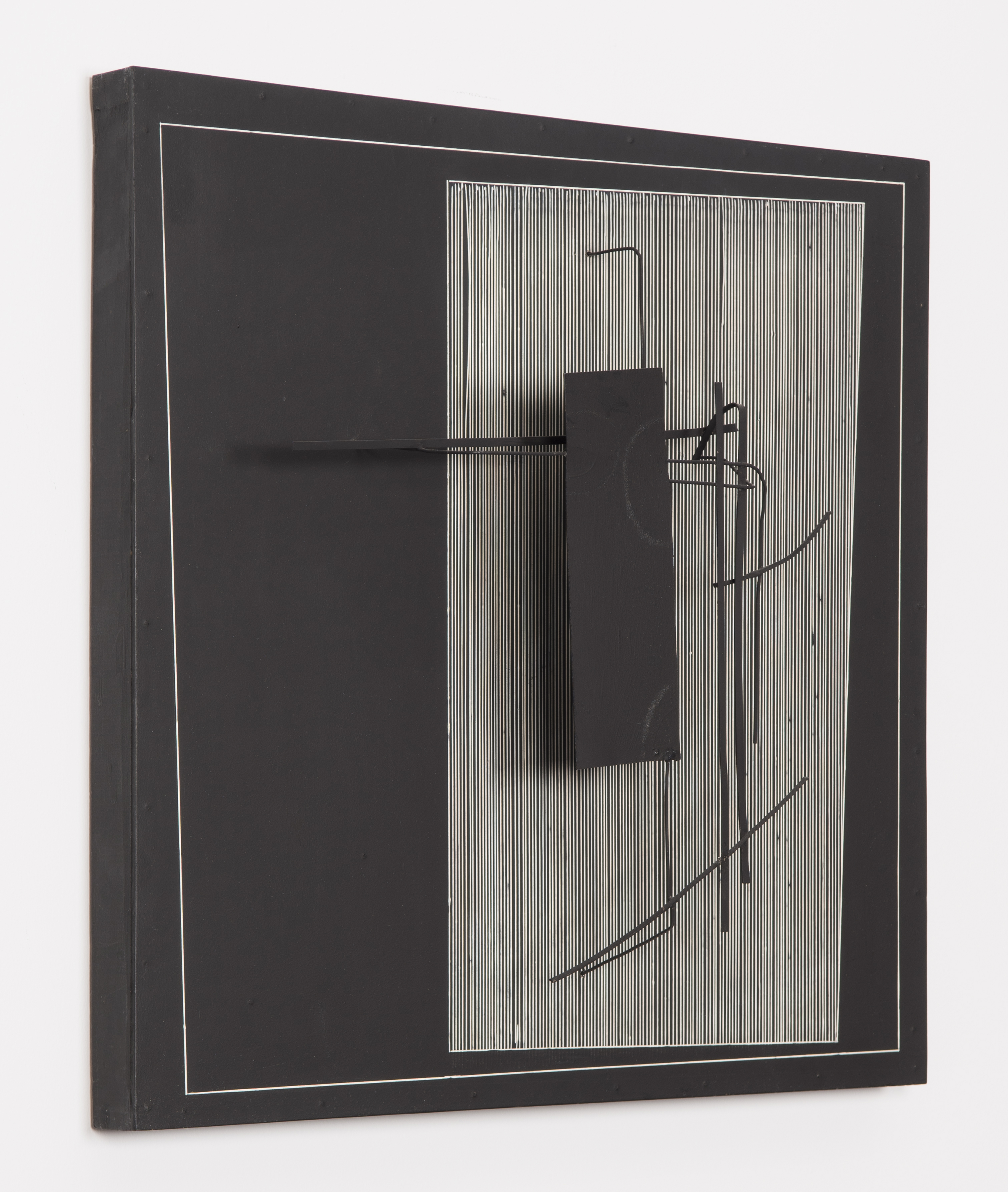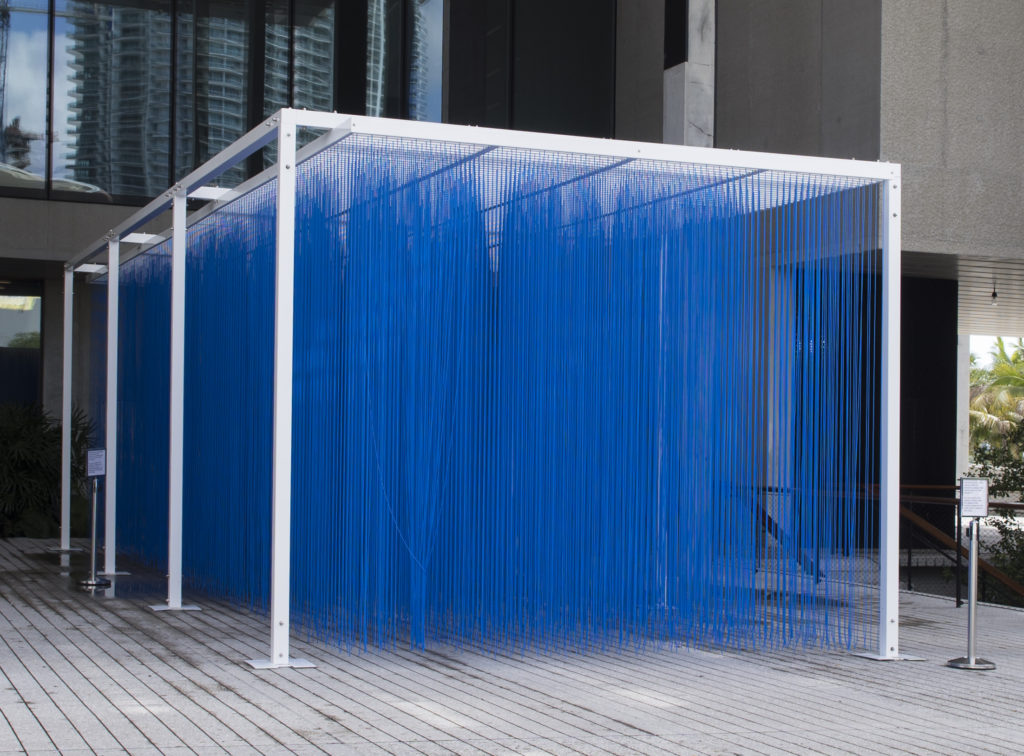Jesus Soto attended the Escuela de Artes Plsticas y Aplicadas de Caracas from 1942 to 1947. In 1950 he moved to Paris where he experimented with geometric abstraction, first under the influence of Mondrian and later adapting musical principles of dodecaphony or twelve-tone series to the visual arts. He participated in the exhibition Le mouvement (Galerie Denise Ren, Paris, 1955), which launched kinetic art. Between 1955 and 1957, he used Plexiglas to obtain a superposition of entramados which, when the observer moved around, produced vibration effects. This is exemplified in works like La cajita de Villanueva (1955), Espiral (1955) and Estructuras Cinticas (1956-1957).
At the end of the 1950s and the beginnings of the 60s he was influenced by Informalism, and distanced himself from geometry. His works became more gestural and material. He used limited colors but maintained their kinetic character. Among the works from this period are the series Vibrations, which he began in 1957, and which earned him the Premio Nacional de Pintura, Venezuela, in 1960. He also produced The Mural, in 1961, in which he incorporated remnants, and Leos viejos (1960-1962), assemblies of wood trunks with incrustations. The principle that activated the kinetic quality of these works was vibration, obtained by the superposition of rods, movable wires and other metallic fragments over planes. This concept, a vestige of his baroque stage, as it has been called, was present in the works Escrituras (initiated in 1963), Quadratos (1974), new sets of Vibraciones and Leos viejos, and other similar works. Towards the mid sixties, Soto returned to compositions of great geometric rigor, in which he used his characteristic tramas as background for squared forms, achieving effects of vibration and instability, as seen in Relacin negro y plata (1966) and Gran cobalto.
In 1967 Jess Soto made the first Penetrable, a large size work made out of hanging plastic or metal tubes that allowed people to walk into it, allowing the interaction of the spectator and the work of art. That year also he constructed his first Volumen suspendido for the International and Universal Exhibition in Montreal. In 1969 he initiated Progresiones, great extensions of space occupied by aluminum twigs that hung or leaned on the ground. In addition to their kinetic and interactive qualities, these new works were suitable for architectural spaces, an aspect Soto started exploring. Beginning in 1975, he made numerous works integrated into architecture. One of them, Volume virtual suspendu (Royal Bank of Canada, Toronto, 1977), was the first in a new series, Volmenes virtuales, in which three-dimensional forms seem to float without support, thanks to the chromatic illusions of their threads or rods. At this time there were several retrospective exhibitions of Soto’s work including those presented at the Muse d’ Art Moderne of the Ville of Paris (1969), the Guggenheim Museum (New York, 1974) and Centre Pompidou (Paris, 1979).
At the beginning of the 80’s, he began to develop the series Ambivalencias, in which he placed, squares of diverse sizes and colors on a plane, producing an ambiguous representation of space and the depth. At this time, Jess Soto produced some of his most important works integrated into architecture including Volume Virtual (Centre Pompidou, 1988), the Gran esfera de Sel (Olympic Park, Seoul, 1988) and Welcoming Flag (Phoenix Tower, Osaka, Japan, 1995). In 1995 he received the Premio Nacional de Escultura, Venezuela and in 2000 he presented Clsico y moderno, a retrospective organized by the Fundacin Corp Group Centro Cultural (Caracas).


